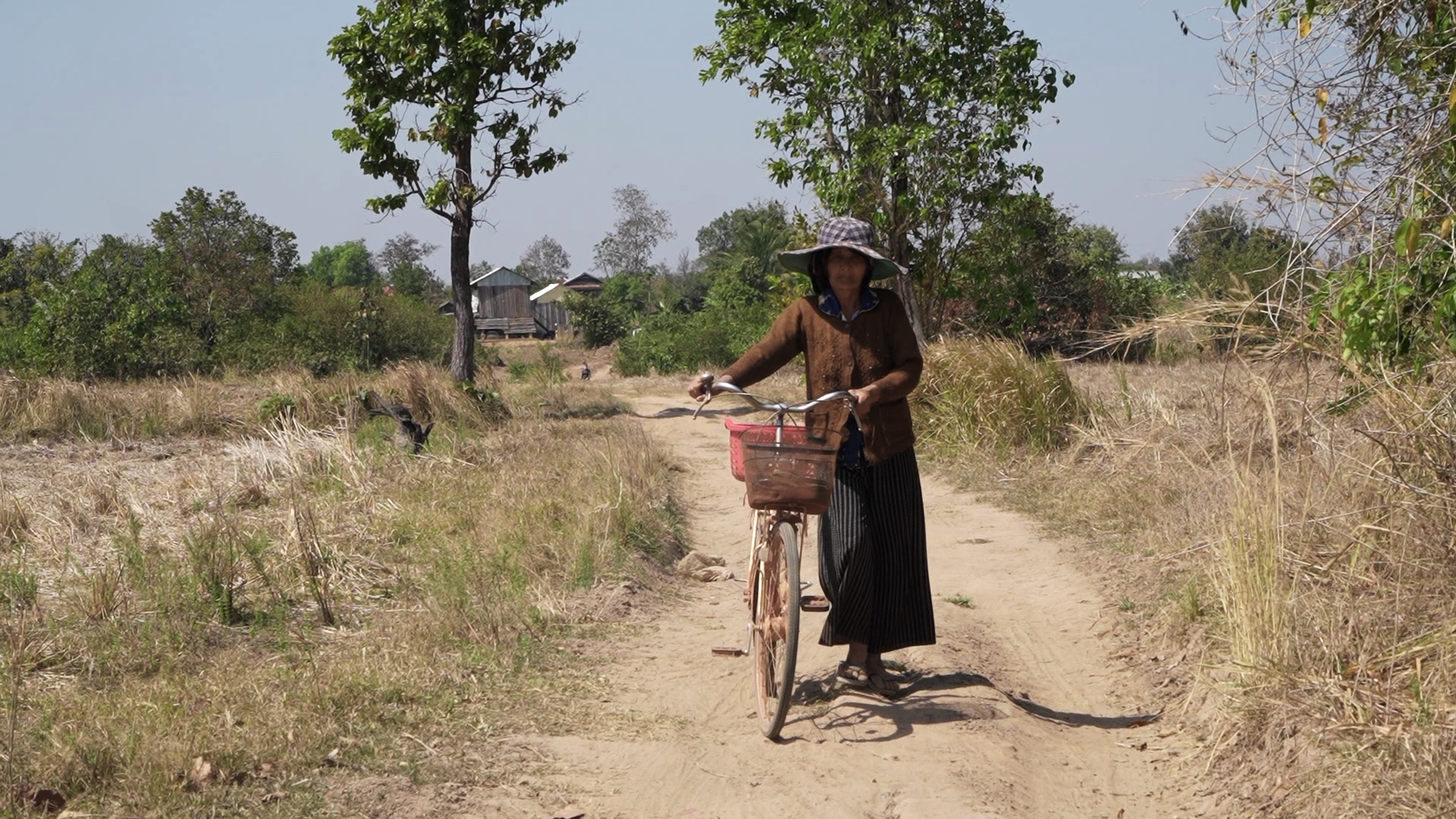It was almost midday when Thun Narun cycled back to her small hut along a bare dusty road, under the burning heat of Cambodia’s countryside.
A slight woman who looks older than her 60 years, Narun wore a bright blue shirt festooned with rainbow unicorns. When she talks about her life, her recollection is unsteady – dates and events morph and change over about two decades, one disturbing fragment becoming another.
She says she was just a little more than 12 years old when the Khmer Rouge killed her family and pressed her into service as a child soldier. That was 1975, she recalled, the year the communist insurgents sacked Phnom Penh, expelled its population and began their genocidal rule.
Narun says the Khmer Rouge forced her to go to Anlong Veng, a town near the Thai border that would later serve as one of the movement’s final strongholds. As a child, Narun said she toted an M-16 rifle as she carried baskets of rice to Khmer Rouge soldiers on the front lines.
“If I did not do my task, I would not be given anything to eat,” she remembered. “But the gun was so heavy for me. I was too young to do the assignment.”
Academics believe the Khmer Rouge recruited at least tens of thousands of children, making a special effort to draft and indoctrinate up until the movement’s final days in 1998. Meanwhile, Cambodia’s other armed factions also made use of child soldiers throughout the country’s civil war, reportedly training minors into the 1990s.
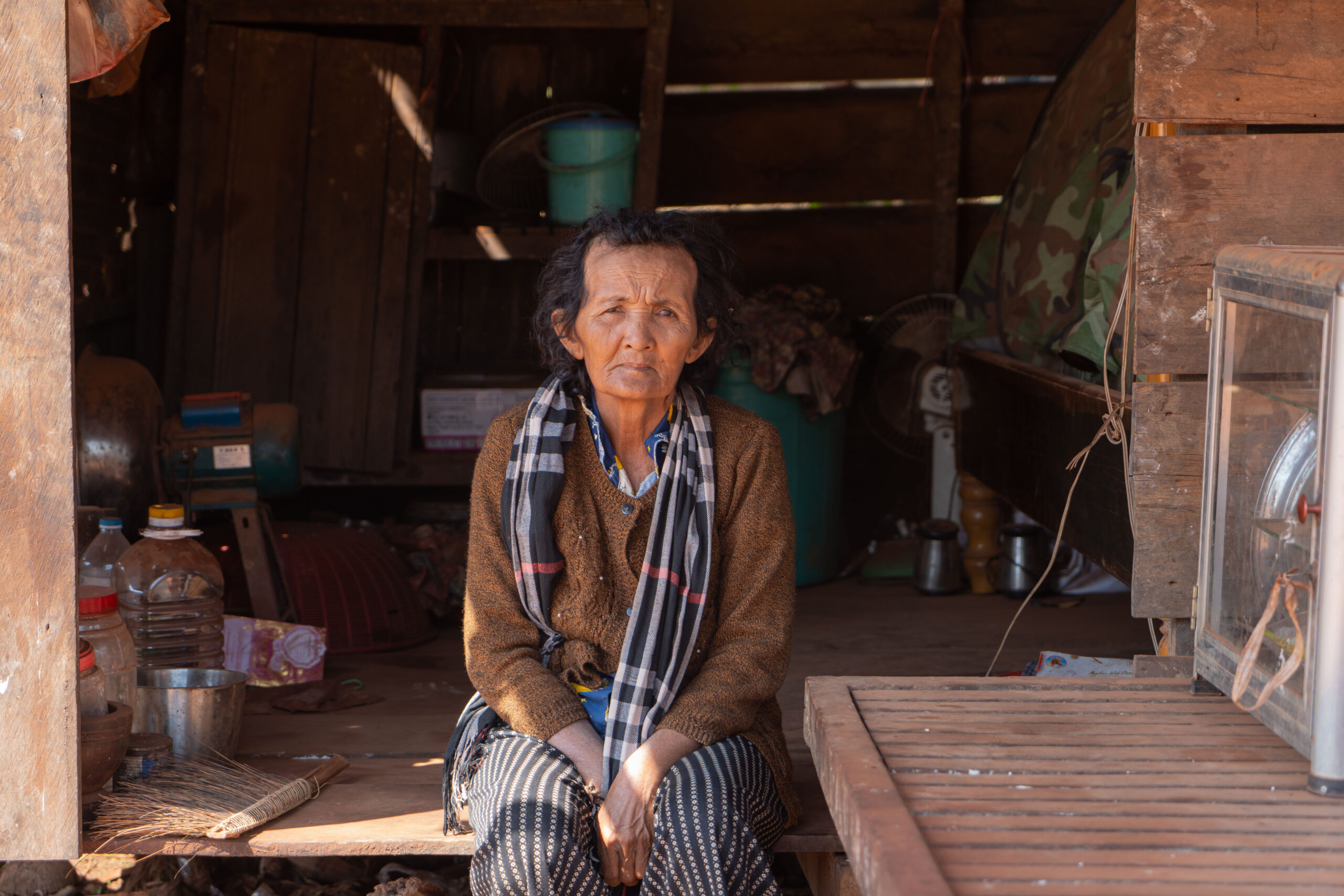
While underage members of what became the Royal Cambodian Armed Forces (RCAF) at least had a chance to remain in the institution, many former Khmer Rouge live on the margins of society. Both perpetrators and victims, their childhood traumas find little sympathy from either official, non-governmental or informal society. Today, they often age in isolation in poverty, finding not even a cold welcome in mainstream programmes to serve survivors.
Narun is one of these people.
There are no records for Narun’s activities during the regime or after. She recounted dramatic escape attempts and grinding misery. Narun remains there today, as do many other surviving former Khmer Rouge.
Deeply impoverished and living alone, Narun’s narrative of the regime years was a confused blur. No documentation was recorded on her activities then.
As an adult, she lives in a wooden hut not bigger than 5 square metres. She works on a meagre potato farm to make traditional Cambodian cakes, which she sells for no more than cents apiece. That is often not enough to support herself, so she occasionally helps her neighbours pick fruits at their farm to afford to have at least one meal a day.
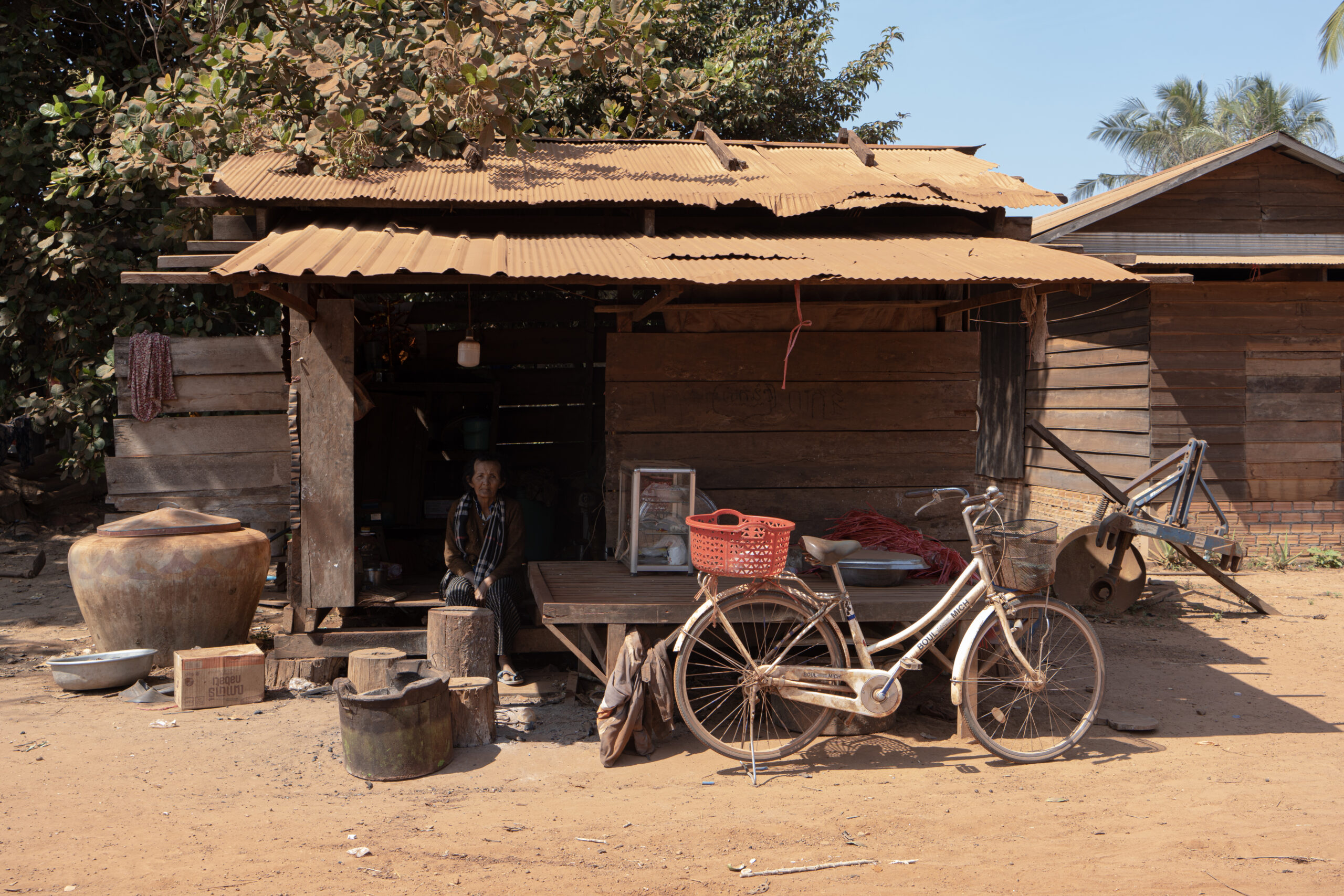
Powerful indoctrination
Through indoctrination and training, Khmer Rouge child soldiers became some of the regime’s most brutal perpetrators. Researchers say that despite their role as perpetrators at the time, child soldiers may face lifelong, severe trauma from the atrocities they have partaken in or witnessed as minors.
However, neither the government nor local institutions or mental health organisations specifically extend support programmes to help former child soldiers cope with the weight of their own Khmer Rouge legacy.
The Transcultural Psychosocial Organization (TPO), a prominent local group working on mental health across Cambodia, has been supporting Khmer Rouge victims for decades. But TPO clinical supervisor Pich Panha says the organisation has never assisted former child soldiers in their mental health struggles.
Their staff do not have any training or experience working with the mental health of children and adults who had been involuntarily or voluntarily enlisted as child soldiers, particularly during the Khmer Rouge time, Panha explained.
Youk Chhang is a survivor and executive director of the Documentation Center of Cambodia (DC-CAM). The organisation details, preserves and teaches the history of the Khmer Rouge era, as well as providing some services to survivors.
“Children hold much stronger onto trauma, hatred and injustice than adults,” he said, adding that it was often child soldiers who were instructed to kill babies and young mothers under the communist regime.
“As children, they didn’t really know what was right and wrong, nor could they feel as much pity and remorse as adults did,” Chhang said.
The children who were most brutal were not those on the front line, he said, but rather those young cadres enforcing state edicts – including as village chiefs.
“Children are like a white canvas,” he said. “If you teach them to hate their neighbours, they will hate them for life. If you teach them to fight, they become fighters. If you teach them to kill, they become killers.”
“I was not scared”
While Narun said she was forced into service, former child soldier Chhun Bun Chhoeun said he was eager to fight for the Khmer Rouge.
“Some soldiers were anxious, some were not. Personally, I was not scared,” he remembered at his home in Anlong Veng, not far from Narun’s house. “If my commander did not let me fight, I would be angry at him.”
Chhoeun currently lives isolated with his wife in a simple house between two villages.
But he originally came from Takeo, a border province to the south of Phnom Penh. He said he was 14 when he volunteered to join the Khmer Rouge army in about 1971.
As a young royalist, he wanted to fight against then-Prime Minister Lon Nol, a military leader who deposed Prince Norodom Sihanouk as head of state. The former king had abdicated his throne in 1955 to rule as a civilian statesman, but still commanded mass public respect as a royal figure.
Chhoeun responded only vaguely to questions about his role during the regime years. But he described very clearly the details of battles he’d fought in, remembering his excitement.
Psychologists remind that children are mentally and emotionally unable to truly volunteer for combat due to their level of development.
Still, as an adult, Chhoeun says he never regretted his choice to join the Khmer Rouge.
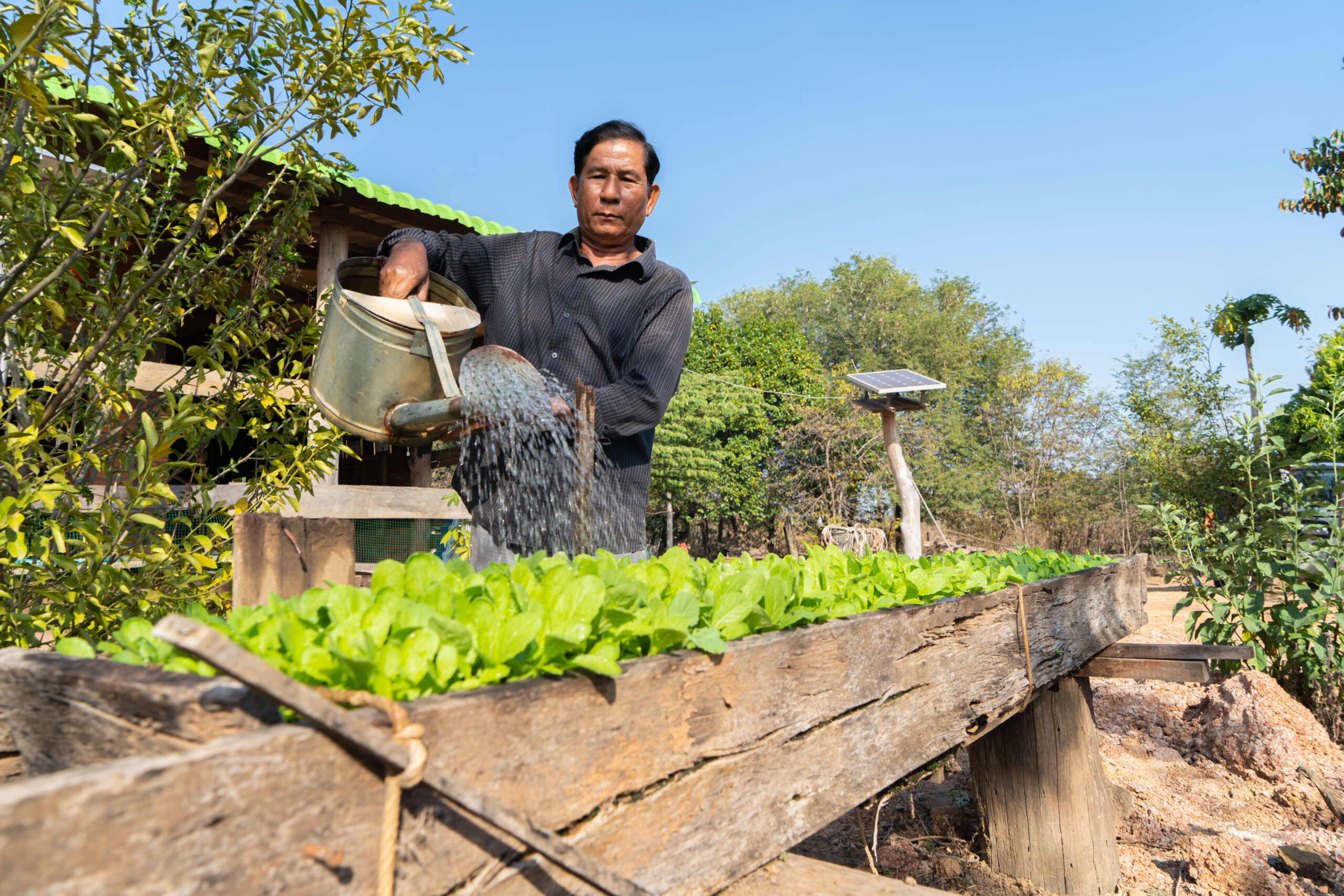
He served the regime and continued fighting as an insurgent until late 1989. Eventually, he said the rebel life became too difficult against the Cambodian government that had reformed in Phnom Penh under the oversight of Vietnam.
“We, the Khmer Rouge soldiers, lived in the jungle, we did not have jobs, and it was difficult to survive,” Chhoeun said.
Fighting for the other side
Throughout decades of war in Cambodia, the Khmer Rouge was not the only armed group with underaged soldiers.
In 1984, now-Brigadier-General Nith Narong also became a 14-year-old child soldier – but for the army of what was becoming the government of Prime Minister Hun Sen, based in Phnom Penh.
Narong, 53, remains in the RCAF today, holding one of the highest military ranks in the country. He says he joined of his own accord to earn money and help his family in a time of severe hardship.
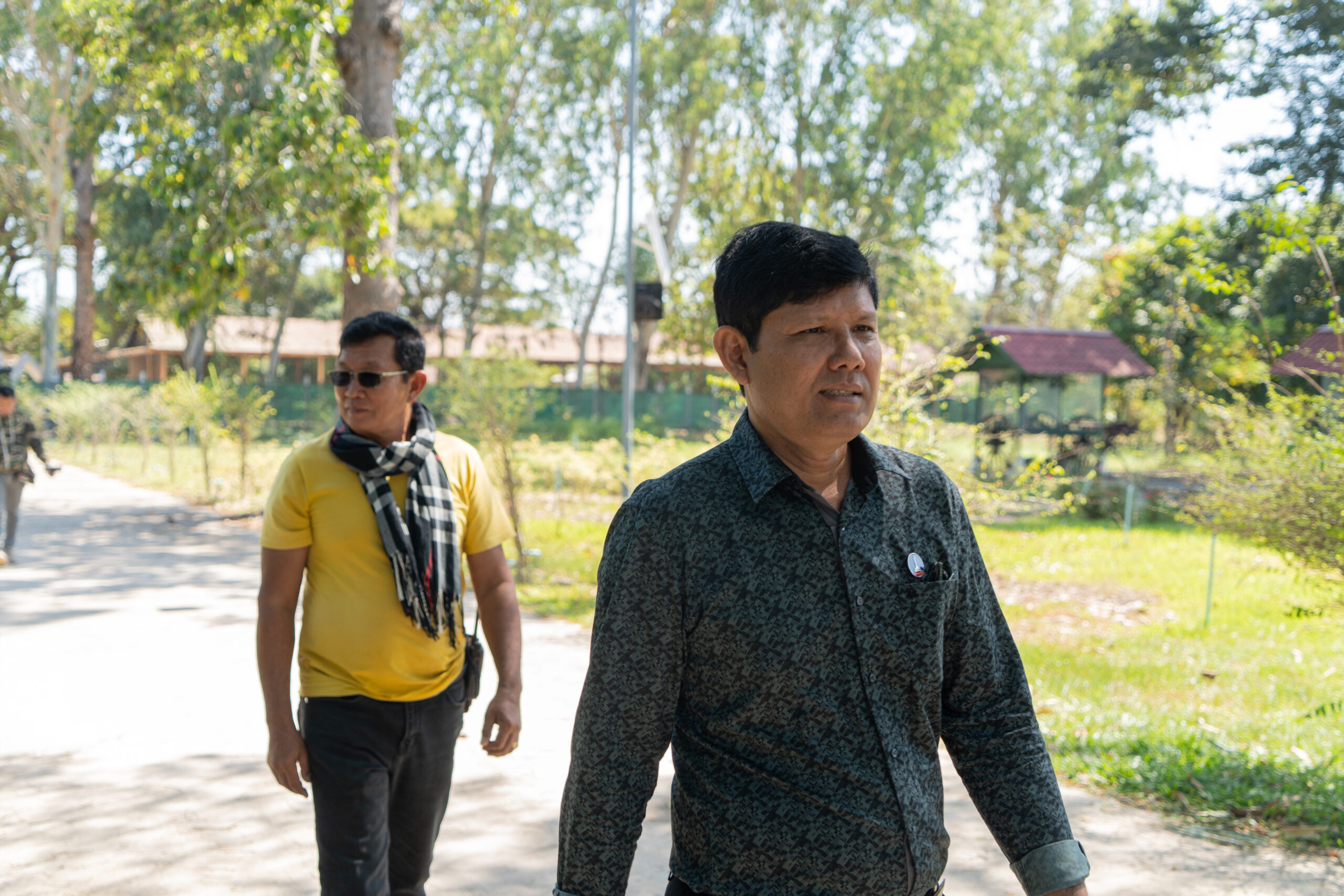
“When I got my first salary, my mum was very proud of me and told me that that was my chance to fight back against what my father had sacrificed for us,” he said. “It really motivated me and gave me the courage to always fight without fear.”
Narong was five years old when the Khmer Rouge troops took his father, a former Lon Nol soldier, away on a truck to “re-educate him”. His father never returned and was presumed killed.
Over the next four years, a similar process repeated with many other family members, including a sister, who likewise vanished forever. Meanwhile, former friends of his older brother became teenaged cadres, some of them brutal killers and torturers.
Horrific memories still hunt Narong, who began fighting the Khmer Rouge insurgency in his own teen years – the start of his now-distinguished career.
But in those earliest, darkest days, there were some slivers of light. Narong’s family still recalls a young village chief who saved them from being killed, allowing the villagers to take hours of rest if they were sick or exhausted from work.
Regardless of what the former child soldiers had done during the regime, Chhang, of DC-CAM, says many sought redemption in the years after.
“Many of them chose to live a different life as soon as they began to understand the magnitude of their brutal actions,” Chhang said. “It took a tragedy to reach understanding.”
Photos by Lim Kimhong for Southeast Asia Globe. Additional reporting by Lim Kimhong and Lay Sophanna.
